Tulips are beautiful flowering plants found in most gardens because of their bright and vibrant colors. But bugs and pests in them have always been frustrating, and it is heartbreaking to see the bugs eat their beautiful flowers.
In this article, we shall learn what are the common bugs that infest tulips and how can we get rid of them.
Bugs like aphids and spider mites feed on the sap of tulips, making them lifeless. Slugs feed on the leaves during the night, making holes. Other than them, bulb mites also feed on the bulb of tulips when stored or planted. To get rid of the pest in tulips, use neem oil and insecticidal soap.
Thus, protecting the plants from pests and preventing situations to attract the bugs is very important.
If you wish to learn about the bugs and pests eating your tulips, keep reading this article. We will also include how to prevent these pests and also protect the tulips from any further attack.
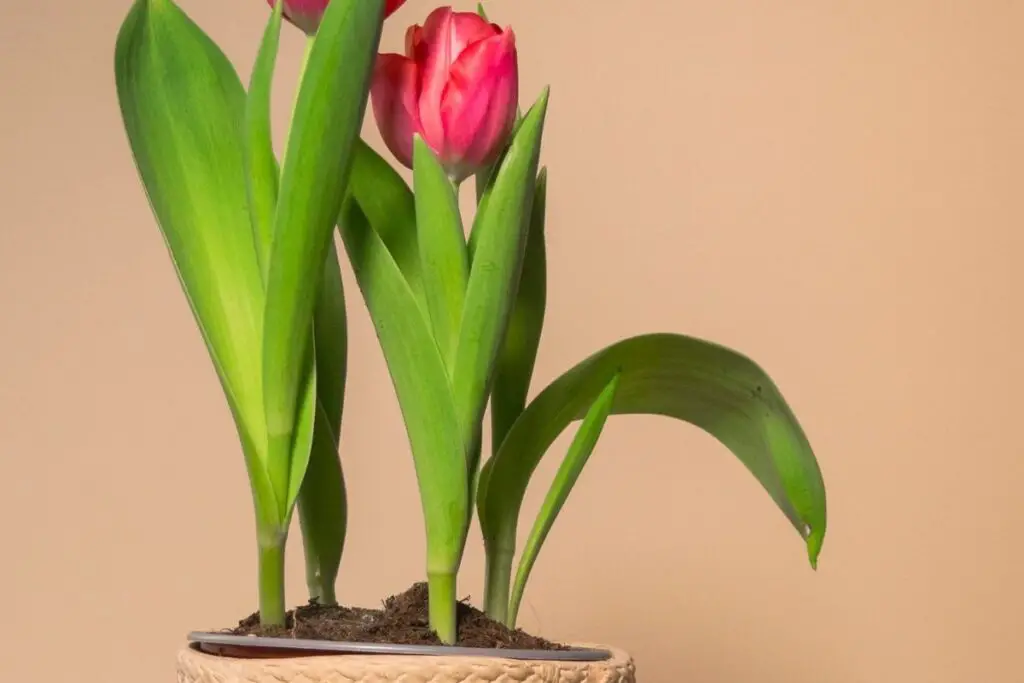
Bugs attacking the tulips
Bugs have always been a significant problem behind unhealthy plants. It is crucial to observe the plants, especially when you are growing them in the garden. The chances of bug attack are more outdoors than indoors.
Bugs like aphids, slugs, spider mites, bulb mites, and many more attack your plant and feed on them if the conditions are ideal.
Identifying the presence of bugs is not easy unless you notice the symptoms. Let’s read the common bugs found in tulips and how you can identify and treat them.
Aphids
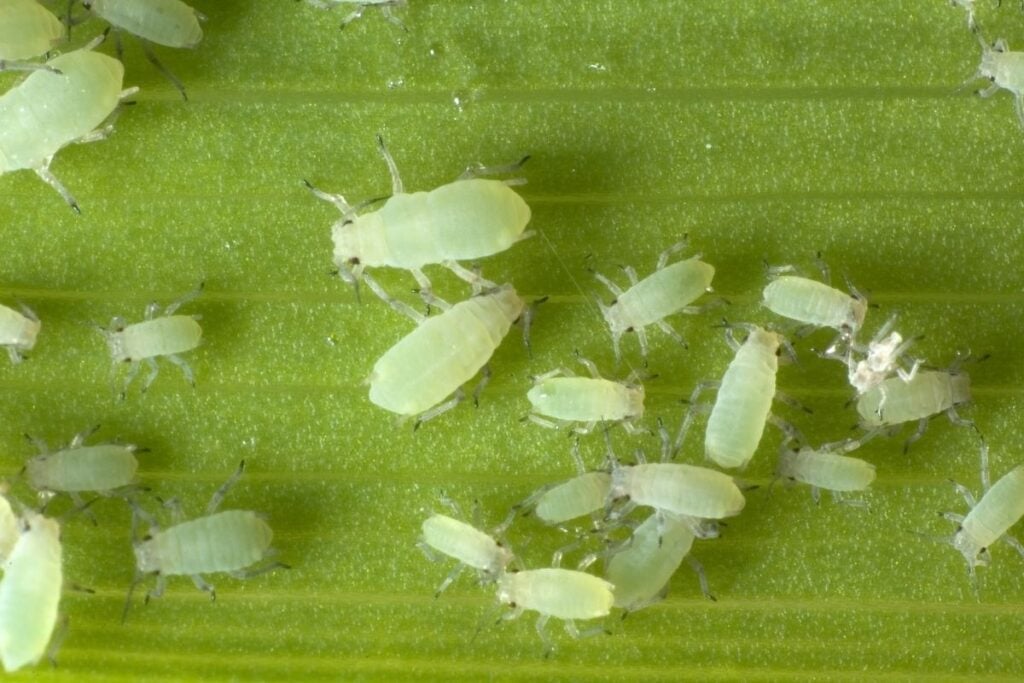
Aphids are tiny light green colored bugs having soft bodies found underneath the leaves and stems. They come in other colors too. These sap-sucking insects suck out all the sap, making the tulips weak and colorless.
Aphids attack the tulip plants mainly when the plant is stressed due to overwatering, underwatering, or overcrowding. They will also spread if the conditions are ideal for them and you are constantly neglecting them.
The tulips might handle small infestations, but massive infestations will harm the plants and damage them.
Spider mites
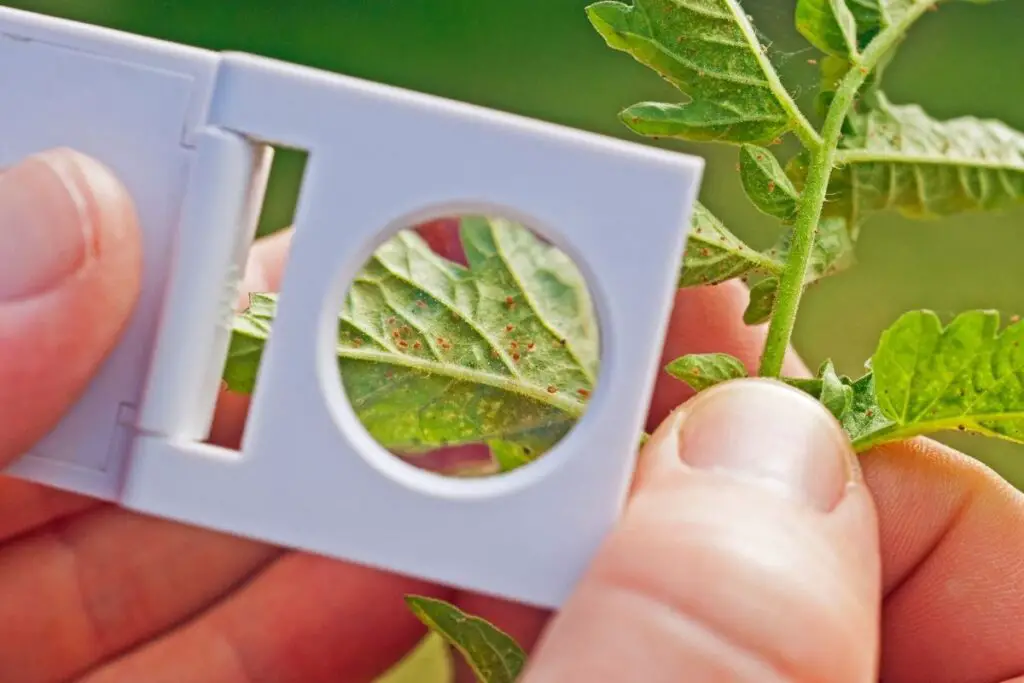
These bugs tend to attack the foliage, stems, and flowers of your tulips. They are available in different colors and resemble spiders. When they attack your plant, you find web-like structures on the edges of the leaves and underneath.
Spider mites are tiny and difficult to spot. They, too, suck out all the juices from your tulip plants.
If you ever notice fine web lines in the leaves, you can place a white sheet under your plant and shake the plant to confirm the infestation.
If you find small dots moving on the white sheets, your plant is probably attacked by spider mites.
Bulb mites
Another mite bug that is common in the tulips is bulb mites. These mites can attack the tulip bulbs anytime.
Bulb mites are tiny bugs white in color. They are almost bulb-shaped and clear. They are found mainly under the soil and in the bulb for feeding.
They are found chiefly when your tulips are overwatered and stressed with root rot or if the tulip bulbs were damaged before planting.
Caterpillars and Larvae
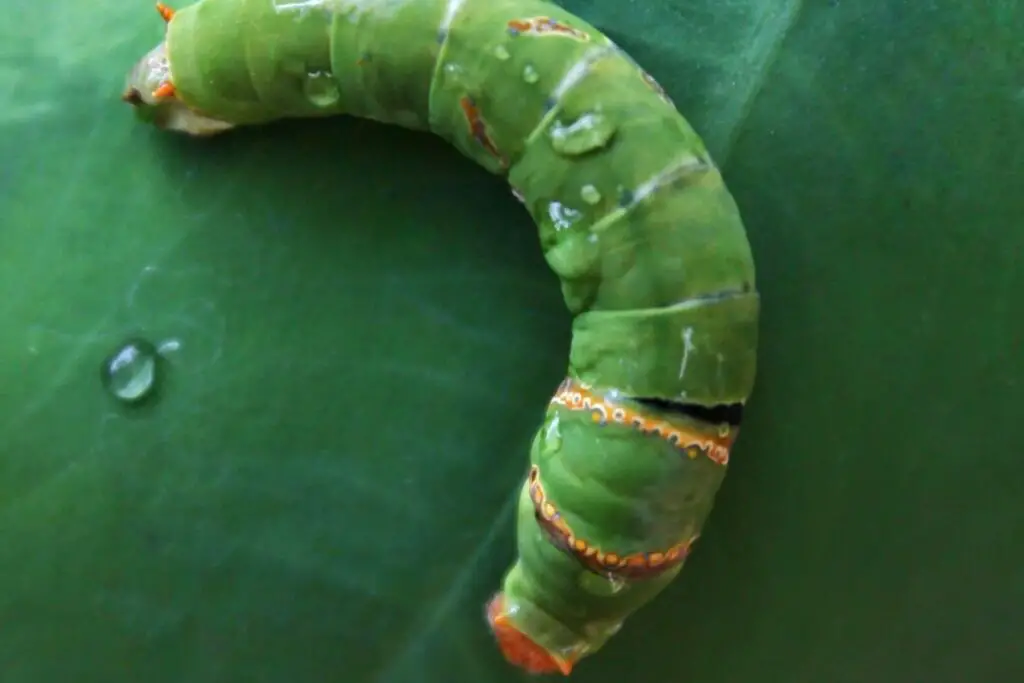
The adult bulb flies look like bees. They will not hurt your tulips. But, the larvae of these flies tend to feed on the tulip bulbs. They will weaken the tulip leaves and slow down their growth.
These larvae are yellow or grey, resembling maggots. Once they attack your tulip plant, removing them and reviving the plant’s health will be difficult.
When you plan to buy the tulips, check the quality and choose healthy bug-free tulip bulbs.
Some other species of caterpillars, butterfly larvae and moths might also feed on your tulip leaves.
Looking for gardening supplies? We have tested 100's of products before recommending them to you guys. Check out our best pick below:
| Image | Gardening Supplies | Best Price? |
|---|---|---|
 Top
Top Top
Top | Raised Garden Bed Kit | Check On Amazon |
 | XLUX Soil Moisture Meter, Plant Water Monitor, Soil Hygrometer Sensor for Gardening, Farming, Indoor and Outdoor Plants, No Batteries Required | No Results |
 Top
Top Top
Top | 82 Pcs Garden Tools Set and Extra Succulent Tools Set | Check On Amazon |
 | Joeys Garden Expandable Garden Hose with 8 Function Hose Nozzle, Lightweight Anti-Kink Flexible Garden Hoses, Extra Strength Fabric with Double Latex Core, (50 FT, Black) | No Results |
 Top
Top Top
Top | Dual Chamber Compost Tumbler | Check On Amazon |
 Top
Top Top
Top | Sunnyglade Plant Stakes | Check On Amazon |
 Top
Top Top
Top | Organic Cold Pressed Neem Seed Oil | Check On Amazon |
 Top
Top Top
Top | Mighty Mint Gallon :-Insect and Pest Control Peppermint Oil | Check On Amazon |
 Top
Top Top
Top | Scotts DiseaseEx Lawn Fungicide | Check On Amazon |
 Top
Top Top
Top | Jacks Classic 20-20-20 All Purpose Fertilizer | Check On Amazon |
 Top
Top Top
Top | 30,000 Seeds Pollinator Attracting Wildflower Mixture | Check On Amazon |
 Top
Top Top
Top | Survival Vegetable Seeds Garden Kit-Over 16,000 Seeds | Check On Amazon |
Slugs
Another pest found in tulip gardens is slugs. These feed on the tulip foliage. They create holes in the leaves, due to which the bulbs fail to get enough energy for good growth and healthy flowers.
Slugs usually attack the plant during the nighttime. They remain inside the soil the whole day, and when darkness falls, they come out and attack the plant.
Slugs get invited in your tulip garden bed, especially under garden debris, when the soil bed remains too moist and damp.
How to remove and prevent bugs from Tulips?
Every gardener will make some mistakes at one point, for which the plants can get attacked by bugs. The best way to get rid of bugs is by proper protection and prevention.
If your tulips show signs like leaf discoloration, deformed leaves, chewed leaves, weak plant or web-like structures, it confirms bug attack on your plants.
You need to observe your garden daily and watch out for any cultural damages. This will help you to identify the problems quickly and treat them in the first place.
Below I have listed some possible ways for removing bugs from the tulips:
Making the soil healthy
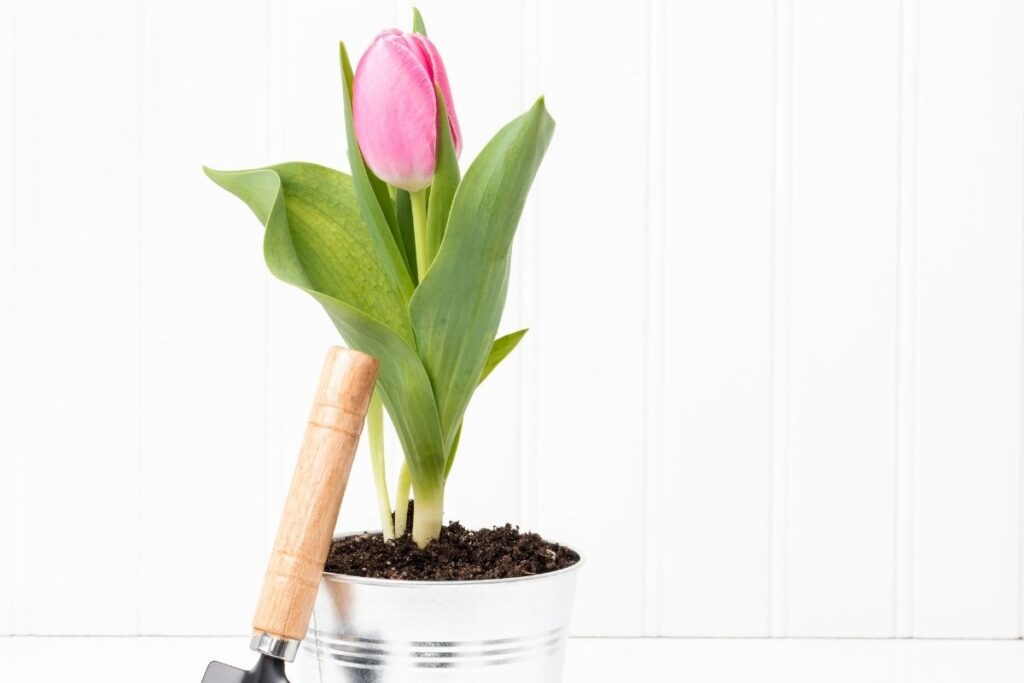
Soil is one of the most important things for the plants through which they receive water, oxygen, nutrients, and root support.
Healthy soil can keep bugs at bay. The bugs get attracted mainly to moist, damp soil and stressed plants.
Try to keep your plant healthy by maintaining good soil quality.
- Try to minimize or stop disturbing the soil bed.
- Add compost to your tulip bed during spring to keep the soil nutritious.
- When your tulips grow higher about a few inches, you can add mulch to your soil bed. It decreases evaporation, weed formation, compaction and maintains ideal soil temperature.
- Keep your garden bed clean and free of debris.
Release natural predators to kill the bugs
Natural predators like ladybugs are very beneficial for removing aphids. Ladybugs are friends to your garden and feed on aphids. So, releasing them in your tulip garden bed will reduce the risk of aphids.
Observe your garden regularly
Observing the tulips every day will help you notice damages. Never neglect them. Even if you do things right, you might make some mistakes unknowingly, which can invite bugs.
So check out your plants daily, especially under the leaves and stems, as these are the ideal places for bugs to hide.
Handpicking
Sometimes bugs are visible because of their size or the massive infestation. In such a case, if you want, you can remove them by handpicking them.
It is an effective and natural way to get rid of bugs. Mainly, the caterpillars and larvae are easy to remove.
Traps
Some traps will help you remove slugs and snails from your tulip garden bed. They are available in the market, or you can also make them on your own.
Nail some wood strips on board. Keep them in your garden bed by placing the strips down so the board props off the soil a little. If there are any slugs or snails, they will climb under it and be removed from the garden.
You can set up beer traps to remove slugs. Take an empty can and pour some beer into it. Bury it in the ground where you suspect their presence.
Make sure that 1 inch of the can remains above the ground. They will arrive and drown in the beer can. Empty the can every morning.
Water pressure
A good forceful shower will remove all the aphids and mites from your tulips. But don’t use too much force.
Avoid the flowers. If your tulips are sturdy enough, they will be able to handle the pressure.
Doing this daily can remove maximum bugs from your plant. If any bug remains, you can handpick them.
Neem oil

Neem oil is always a savior and removes bugs from both outdoor and indoor plants. Spray some neem oil to your tulips, especially the areas where there is more infestation.
Do not wash your plant after applying it. Use it daily until all the bugs are removed.
You can also spray this once a month to prevent any further bugs or fungal infections.
Insecticidal soaps
Liquid soaps or natural soaps like castile soap will help in removing bugs from the tulips.
Mix 5 tablespoons of the liquid soap with 1 gallon of water. First, test on a smaller portion of your plant in the infested area. If it works, spray to other areas of infestation.
If the spray shows signs of damage, dilute the solution more.
Other animals or pests found in Tulips
Except for bugs, some other pests are found in the Tulips. When hungry, they will dig out the tulips and feed on the bulbs, leaves, and flowers; some will rip apart and scatter the flowers and leaves.
Rabbits
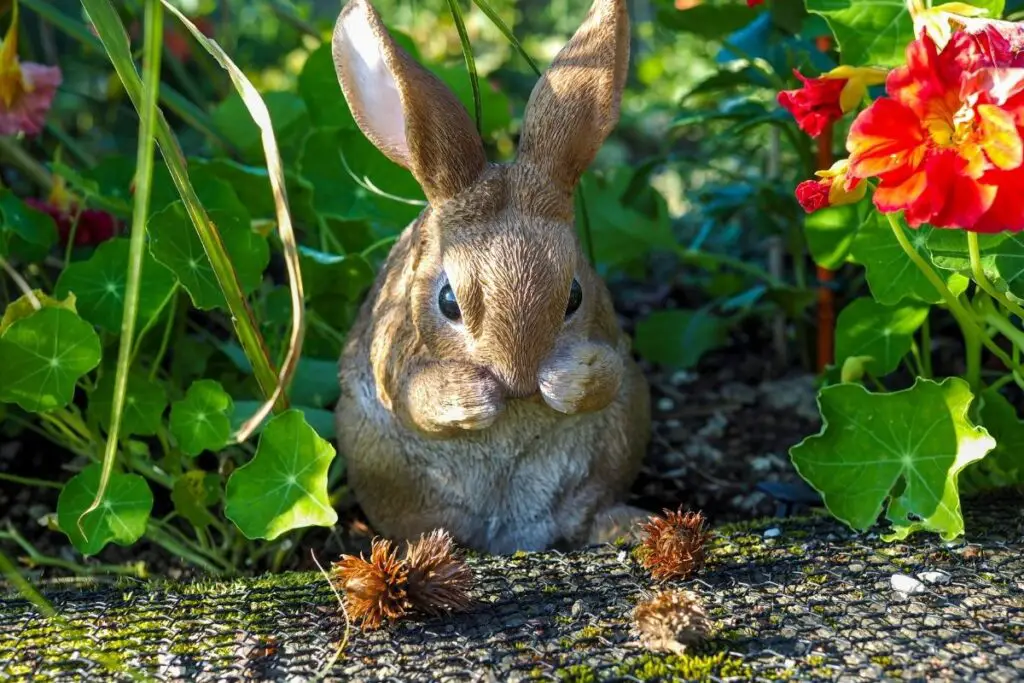
One of the common pests of tulips is rabbits. When hungry, they will eat up the whole plant. Rabbits primarily feed on the leaves, flower buds, and flowers.
Tulips are said to be their favorite food. Rabbits attack the tulips mainly during the spring season. Sometimes, they don’t even finish their food.
You can identify rabbit damage by their biting style. Rabbits bite diagonally, and their damage looks as if someone worked on your tulip plants and flowers with garden clippers.
- Rabbits like to feed more on leafy greens than flowers to fulfill their appetite. So planting more leafy green vegetable plants can help in keeping the rabbits away from your colorful tulips.
- Consider fixing a fence or physical barrier around your tulip garden bed buried 10 inches deep. The height of your arranged barrier should be 3 feet.
- You can plant some other bulb plants like daffodils, snowflakes, and ornamental onions. These can deter rabbits.
- Another option is to spread some talcum powder over the tulip leaves. Or, you can also spread some pepper powder to repel rabbits.
- There is a commercial product available in the market called Liquid Fence. It smells like rotten eggs. When you apply them around your garden bed, the rabbits will never come back to eat your tulips again.
Rodents
Rodents including rats, mice, chipmunks, and squirrels will also feed on tulip flowers and bulbs. Squirrels and chipmunks feed on the flower buds and dig up the tulips to feed on their bulbs.
Sometimes, they will not totally feed on the flowers and just rip them and scatter them around.
- Using screening or bird net around your garden will keep them away. After some days, they will lose interest in your garden and go away.
- You can also use a hot pepper solution to keep squirrels or chipmunks away.
- Using some materials to reduce the taste and smell of tulips will also keep squirrels away.
- Methyl nonyl ketone crystals and mothballs are a kind of repellents that can deter these rodents. Place them around your tulips to keep squirrels away.
- There are some more products available whose smell resembles coyote urine which can keep squirrels and chipmunks away.
- You can also plant other bulb plants like daffodils, allium, or fritillaries. These are also meant to prevent squirrels from eating tulips.
Rats love feeding on the bulbs. They dig up the plant to feed on the bulbs and then the whole plant.
- You can keep rats away by fixing fences or physical barriers around your tulip garden.
- You can also try spraying peppermint oil around your tulips to deter them.
- Using foul-smelling organic fertilizers like bone meal or fish emulsion will also not attract these rodents at all.
- Ground-based rodents like mice enjoy staying in the leaf piles. You can add a 2-inch layer of mulch and clear the piles near your tulip garden bed to stop them from making nests.
- Bulb cages are always an excellent choice to stop rodents from attacking and eating up the tulips. Cages will protect your tulip bulbs from getting dug up, though you cannot save the leaves and flowers. You can buy these cages from the market or bend ½ inch mesh wire in a box shape. In a large planting hole, set your cages with the tulip bulbs inside them, close the cage and cover the box with soil.
- You can line up the soil bed with poultry wire sheets after planting tulips to protect the bulbs. Cover these wires with mulch to disguise.
Other rodents include moles and voles. They will also attack and eat up your precious tulips.
Raccoons
They are another kind of pests that eat up your precious tulips. They will just dig up your beautiful flower and eat the bulbs. Arranging a fence around your tulip garden bed will help to keep them away from tulips.
Deer
They love feeding on vegetation. When your tulips are just growing new leaves, deer will grab those new leaves, pull up the tulip bulbs, and eat them.
You can identify their damage while seeing the half-damaged bulbs and the leaves and their footprints. Once they find your tulips tasty, keeping them away from the tulip bed will be difficult.
- If you live in a region with a large deer population, first, you should fix a fence or any protection barrier around your tulip garden bed. Deer won’t be able to reach or harm the plants.
- A liquid fence will work for deer as well.
- Plant other flowers accompanied with tulips, the one disliked by deer. The flowers that have a strong smell and toxicity – daffodils, foxgloves, poppies, bearded irises, peonies will keep deer from eating your tulips. As they don’t like the strong smell, you can also hang a smelly soap bar beside your tulip bed.
- Use motion light or wind chimes near your tulip bed. Deer don’t like sudden movements. The movement of these lights or wind chimes will keep deer away from your garden.
- You can use cayenne pepper to sprinkle around the tulip bed. Deer will not enjoy the smell and thus won’t like even to taste your tulips.
Final words
There are a lot of pests and bugs which will find your tulip plants to be their food.
For preventing bugs, you need to stop creating situations ideal for their stay, like overwatering, under watering, or over-fertilizing the tulips. These situations make the plants weak, which becomes an ideal place for the bugs to stay and feed on the tulips.
The first thing you can do to stop pests from eating tulips is by creating a fence and other protective barriers. Try all alternative methods to repel them and stop them from eating up your tulips.
With prevention, you will always find your garden filled with beautiful and colorful tulips.
Source: Wikipedia, North Dakota Stae University, The Royal Horticultural Society.
